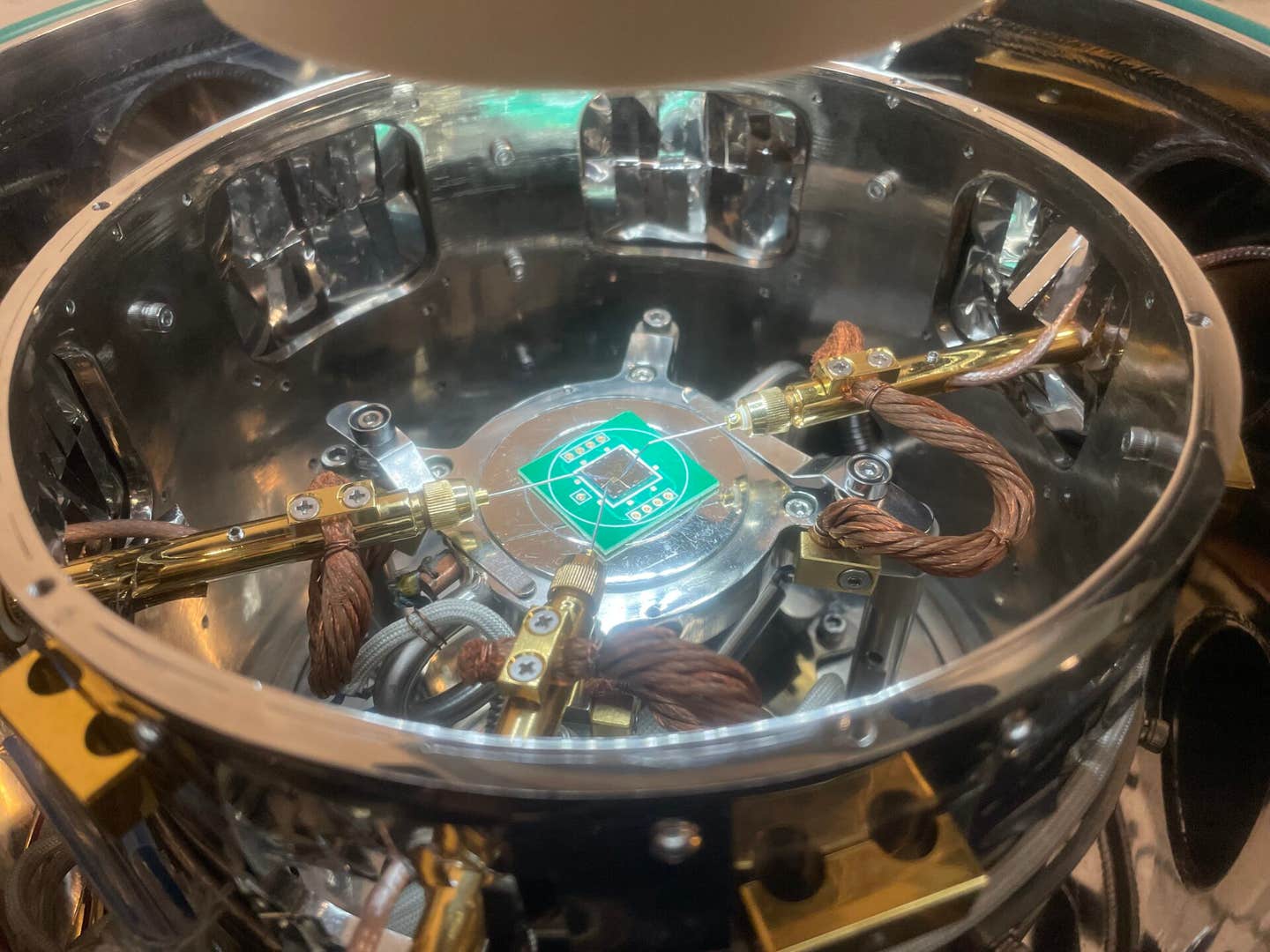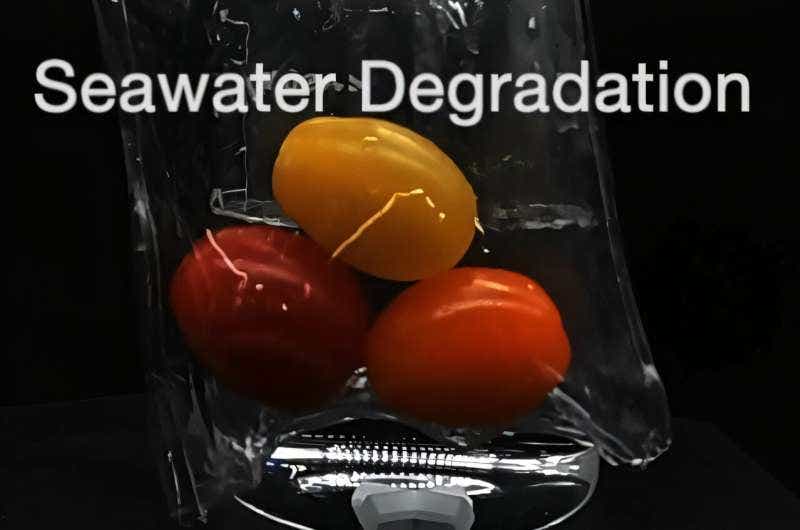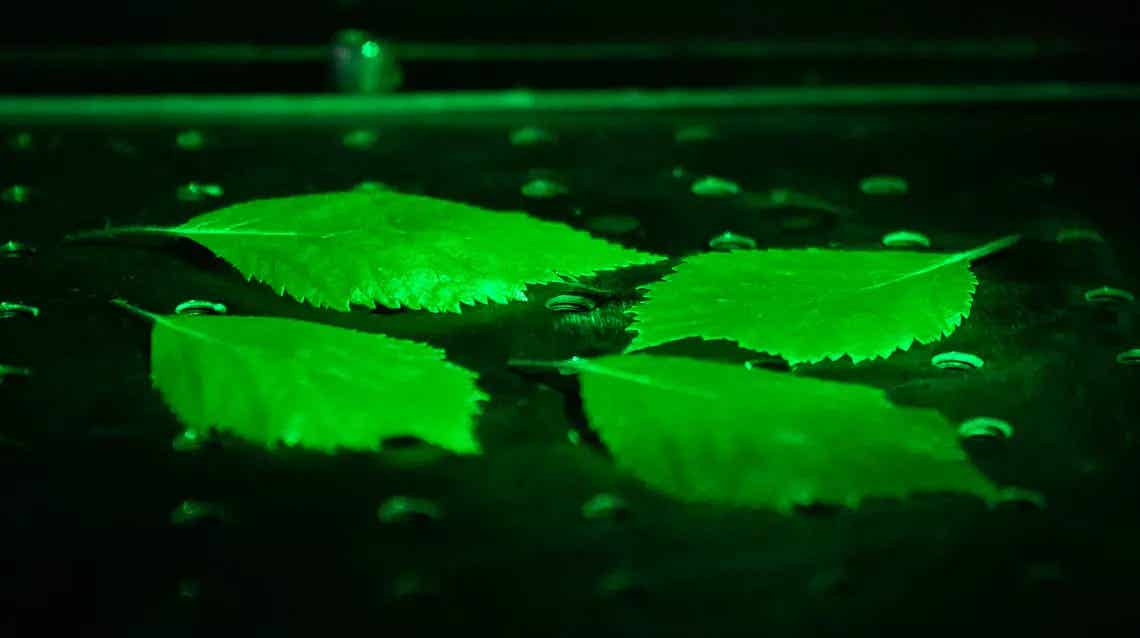Protons set to power next-generation, brain-inspired, neuromorphic memory devices
Researchers have provided a ground-breaking new perspective on ferroelectric materials and their potential in advanced memory devices.

[July 19, 2023: Staff Writer, The Brighter Side of News]
The team's ferroelectric neuromorphic computing chip, shown here undergoing testing in the lab. (CREDIT: 2023 KAUST; Fei Xue)
A pioneering research venture led by King Abdullah University of Science & Technology (KAUST) has provided a ground-breaking new perspective on ferroelectric materials and their potential in advanced memory devices.
The researchers have uncovered a unique proton-mediated mechanism that enables the production of multiple phase transitions in ferroelectric materials, an innovative approach that could spearhead the development of highly efficient memory technologies such as neuromorphic computing chips.
Ferroelectric materials like indium selenide have long been the subject of research due to their innate polarization properties, which can be switched by introducing an electric field. This inherent trait has established them as prime candidates for the fabrication of memory technologies.
Xin He, a key contributor to the study working under the direction of Fei Xue and Xixiang Zhang, stated, "Existing memory devices that leverage ferroelectric materials have demonstrated exceptional maximum read/write endurance and writing speed with the advantage of requiring low operating voltages. However, the storage capacity is still limited."
Related Stories
He elaborated that the current storage limitation stems from the restricted ability of traditional methods to trigger only a few ferroelectric phases, coupled with the technical difficulties associated with capturing these phases. In response, the researchers have ingeniously proposed and tested a new technique predicated on the protonation of indium selenide, which can engender a wide range of ferroelectric phases.
The scientists ingeniously integrated the ferroelectric material within a transistor comprising a silicon-supported stacked heterostructure for a comprehensive evaluation. As part of the study, they layered a multilayered indium selenide film on the heterostructure, which included an aluminum oxide insulating sheet, encapsulated between a platinum layer at the base and a porous silica layer at the apex. The platinum layer served as electrodes for the applied voltage, while the porous silica acted as an electrolyte, providing protons to the ferroelectric film.
By altering the applied voltage, the team was able to manipulate the proton content in the ferroelectric film, either by injecting more protons or removing them, thereby inducing various ferroelectric phases characterized by different protonation degrees. This flexibility in controlling protonation degrees is a critical aspect in the creation of multilevel memory devices offering substantial storage capacity.
The team aims to enhance the storage capacity of memory devices and ferroelectric neuromorphic computing chips that consume less energy and operate faster. (CREDIT: 2023 KAUST; Fei Xue)
A fascinating observation noted by the researchers was the correlation between the applied voltage and protonation. Higher positive voltages enhanced protonation, while increased negative voltages reduced protonation. Furthermore, the distribution of protonation also showed dependency on the distance of the film layer from the silica, with maximum values in the bottom layer in contact with silica and gradually decreasing to reach minimum levels in the top layer.
Contrary to expectations, the researchers discovered that the proton-induced ferroelectric phases spontaneously reverted to their initial state once the voltage was deactivated. Xue elaborated on this peculiar observation, stating, "We observed this unusual phenomenon because protons diffused out of the material and into the silica."
Device structure and working principle. Schematics of our three-terminal α-In2Se3 devices. Exfoliated α-In2Se3 flakes were placed on stacked heterostructure gates, which are composed of Pt, Al2O3, and porous silica. (CREDIT: Science Advances)
In a bid to increase proton-injection efficiency, the team fabricated a film that displayed a smooth and seamless interface with silica. As a result, they successfully engineered a device that functions below 0.4 volts, a crucial development for the creation of low-power memory devices. Xue remarked, "Our biggest challenge was to reduce the operating voltage, but we realized that the proton-injection efficiency over the interface governed operating voltages and could be tuned accordingly."
The breakthrough study paves the way for novel advancements in the field of neuromorphic computing. The team remains firmly committed to fostering the development of neuromorphic chips powered by ferroelectric material, setting sights on chips that consume less energy and operate at higher speeds. "We are committed to developing ferroelectric neuromorphic computing chips that consume less energy and operate faster," Xue affirmed.
Reversible switching of multiple ferroelectric phases by a protonic gate for Device 1. Schematic working principle of ferroelectric phase transitions under different gate biases. Red dots in the porous SiO2 layer represent protons. (CREDIT: Science Advances)
In essence, the KAUST-led study signifies a paradigm shift in memory technology, highlighting the untapped potential of proton-mediated phase transitions in ferroelectric materials. This advancement might just be the cornerstone for the next generation of memory devices, propelling us closer to the age of brain-inspired computing.
What are protons?
A proton is a subatomic particle with a positive electric charge. It is one of the three fundamental particles, along with neutrons and electrons, that make up the nucleus of an atom. The number of protons in an atom's nucleus is called the atomic number, and it determines the chemical element of the atom. For example, all atoms with one proton in their nucleus are hydrogen atoms, while all atoms with two protons are helium atoms.
Protons are very stable particles, and they do not decay over time. They have a mass of about 1.67262192369(51)×10−27 kg, which is about 1836 times the mass of an electron. Protons are also very small, with a radius of about 0.877 fm (femtometers).
Protons are held together in the nucleus of an atom by the strong nuclear force, which is one of the four fundamental forces of nature. The strong nuclear force is very powerful, but it only works over very short distances. This is why protons are able to be held together in the nucleus, even though they have a positive charge and would normally repel each other.
Protons are important in many different areas of science, including chemistry, physics, and nuclear physics. They are also used in many different technologies, such as particle accelerators and nuclear power plants.
Here are some additional facts about protons:
Protons are made up of three quarks: two up quarks and one down quark.
The up quark has a charge of +2/3, while the down quark has a charge of -1/3.
The total charge of a proton is +1, which is the sum of the charges of the three quarks.
Protons are found in the nucleus of every atom except hydrogen, which has only one proton in its nucleus.
The number of protons in an atom's nucleus is called the atomic number.
The atomic number of an element determines the chemical properties of that element.
Protons are very stable particles, and they do not decay over time.
Protons are held together in the nucleus of an atom by the strong nuclear force.
The strong nuclear force is very powerful, but it only works over very short distances.
Protons are important in many different areas of science and technology.
For more science and technology news stories check out our New Innovations section at The Brighter Side of News.
Note: Materials provided above by The Brighter Side of News. Content may be edited for style and length.
Like these kind of feel good stories? Get the Brighter Side of News' newsletter.



